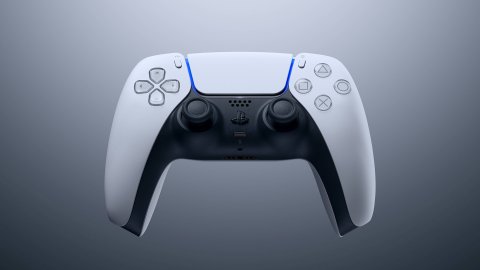
PS5, DualSense controller disassembled by iFixit
The PS5 DualSense controller has been disassembled by iFixit, the YouTube channel that deals with teardowns to verify the repairability of the various devices. Well, it seems that the drifting phenomenon has precise reasons and is only destined to get worse.With a class action already launched against Sony for the DualSense drift, it is clear that the topic is rather hot and only the limited availability of PlayStation 5 in stores has made it less widespread than it could have been under normal conditions.
According to iFixit, the problem of the components that causes drifting was well known and therefore largely avoidable for the debut of the new Sony console, which apparently did not consider it appropriate to modify the project.
On the one hand, there is the fact that the sticks are all produced by the same company, which has established precise criteria for duration for the potentiometer that receives the inputs, but this duration can substantially decrease in case of intense and frenetic use.
On the other hand, the presence of parts that are in proximity to these elements and that are ruined by dust or wear, returning incorrect calibrations and giving rise to the phenomenon of drifting.
In all cases, it unfortunately seems that the DualSense is not the most easily repairable controller in the world: the parts that can cause problems are welded and removing them implies a certain familiarity with this type of intervention.
Source
iFixit PS5 DualSense deep dive figures out the thumbstick drift
PS5 owners and prospective buyers alike have probably found recent reports of thumbstick drift in the DualSense controller alarming. After all, the PlayStation 5 is barely three months old, so the idea that users are already experiencing thumbstick drift is cause for worry. Drift is also something that’s becoming increasingly common in modern-day controllers, and now iFixit has set out to find why it’s happening in the DualSense controller.
In a lengthy deep dive published today, iFixit discovered that the thumbstick modules in the DualSense – made by a Japanese company named Alps – have a lot of similarities with the modules in other controllers. “Tempting as it may be to blame Alps for the PS5’s drifting issues, they probably aren’t the villain of this story — because, brand name notwithstanding, this joystick module looks extremely familiar. You may already recognize it from the prior-gen PlayStation’s controller, the DualShock 4. Or from the Xbox One controllers. Maybe the Nintendo Switch Pro controller. Or, somewhat confusingly, the $180 Xbox One Elite controller. Underneath that plastic cap, the dirty secret is that they all use the same joystick hardware.” (emphasis in original)
Not only does iFixit’s teardown uncover two potentiometers on each DualSense thumbstick that are prone to wear, but it investigation also uncovered something even more surprising: the thumbstick modules in the DualSense controller are soldered to the controller’s board with 16 solder joints. Unless you break out some serious solder hardware, it’s hard to consider the thumbstick modules user-replaceable.
iFixit’s deep dive revealed another troubling statistic, as the potentiometers in Alps’ RKJXV thumbstick modules (the ones that we often see held up as replacement modules for PlayStation, Xbox, and Switch Pro Controllers) are only rated for 2,000,000 cycles. It doesn’t take a mathematician to know that most gamers will burn through those 2,000,000 cycles rather quickly.
In all, iFixit listed four reasons why thumbstick drift can happen in these modern controllers. The first is sensor wear; followed by spring fatigue; the plastic material in the thumbstick stretching; and finally, the build up of grime and dust or the presence of moisture. While end-users can sometimes use software to fix the issue temporarily – for instance by adjusting the dead zone on their thumbsticks – or swap out the hardware themselves, iFixit says that at the end of the day, console manufacturers need to make better decisions about the modules they’re using in their controllers.
After all, the fancy tech inside of the DualSense controller doesn’t mean anything when its cheap thumbstick modules end up failing. Be sure to read through iFixit’s full report on thumbstick drift in the DualSense, because it’s a fascinating and well-researched – albeit somewhat discouraging – read.